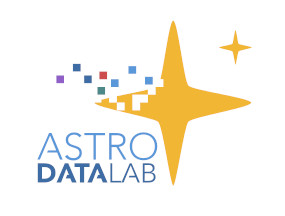"""Data Lab helpers for clustering."""
__authors__ = 'Robert Nikutta <robert.nikutta@noirlab.edu>, Data Lab <datalab@noirlab.edu>'
__version__ = '20200204' # yyyymmdd
# 3rd party
import numpy as np
[docs]
def findClusters(x,y,method='MiniBatchKMeans',**kwargs): # x,y can be for instance ra,dec
"""Find 2D clusters from x & y data.
Parameters
----------
x, y : seq (e.g. tuple,list,1-d array)
Location of points in (x,y) feature space, e,g, RA & Dec, but
x & y need not be spatial in nature.
method : str
Cluster finding method from :mod:`sklearn.cluster` to
use. Default: 'MiniBatchKMeans' (a streaming implementation of
KMeans), which is very fast, but not the most robust. 'DBSCAN'
is much more robust, but MUCH slower. For other methods,
consult :mod:`sklearn.cluster`.
**kwargs
Any other keyword arguments will be passed to the cluster
finding method. If method='MiniBatchKMeans' or 'KMeans',
n_clusters (integer number of clusters to find) must be
passed, e.g.
.. code-block:: python
clusters = findClusters(x,y,method='MiniBatchKMeans',n_clusters=3)
"""
import sklearn.cluster as C #import KMeans, MiniBatchKMeans, DBSCAN
if method in ('MiniBatchKMeans','KMeans'):
if 'n_clusters' not in kwargs:
kwargs['n_clusters'] = 3
try:
METHOD = getattr(C,method)(**kwargs)
except Exception as e:
print (str(e))
raise
X = np.matrix(zip(x,y))
clusters = METHOD.fit(X)
return clusters
[docs]
def constructOutlines(x,y,clusterlabels): # compute convex hull, one per cluster label
"""Construct the convex hull (outline) of points in (x,y) feature space,
Parameters
----------
x, y : seq (e.g. tuple,list,1-d array)
Location of points in (x,y) feature space (e,g, RA & Dec).
Returns
-------
hull : instance
The convex hull of points (x,y), an instance of
:class:`scipy.spatial.qhull.ConvexHull`.
Example
-------
Given `x` & `y` coordinates as 1d sequences:
.. code-block:: python
points = np.vstack((x,y)).T # make 2-d array of correct shape
hull = constructOutlines(x,y)
plt.plot(points[hull.vertices,0], points[hull.vertices,1], 'r-', lw=2) # plot the hull
plt.plot(points[hull.vertices[0],0], points[hull.vertices[0],1], 'r-') # closing last point of the hull
"""
from scipy.spatial import ConvexHull
points = np.vstack((x,y)).T
hull = ConvexHull(points)
return hull
